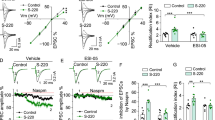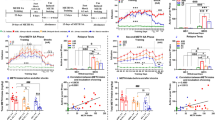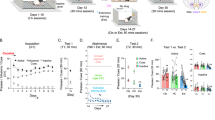Abstract
Early life stress (ELS) is highly related to the development of psychiatric illnesses in adulthood, including substance use disorders. A recent body of literature suggests that long-lasting changes in the epigenome may be a mechanism by which experiences early in life can alter neurobiological and behavioral phenotypes in adulthood. In this study, we replicate our previous findings that ELS, in the form of prolonged maternal separation, increases adult methamphetamine self-administration (SA) in male rats as compared with handled controls. In addition, we show new evidence that both ELS and methamphetamine SA alter the expression of the epigenetic regulator methyl CpG-binding protein 2 (MeCP2) in key brain reward regions, particularly in the nucleus accumbens (NAc) core. In turn, viral-mediated knockdown of MeCP2 expression in the NAc core reduces methamphetamine SA, as well as saccharin intake. Furthermore, NAc core MeCP2 knockdown reduces methamphetamine, but not saccharin, SA on a progressive ratio schedule of reinforcement. These data suggest that NAc core MeCP2 may be recruited by both ELS and methamphetamine SA and promote the development of certain aspects of drug abuse-related behavior. Taken together, functional interactions between ELS, methamphetamine SA, and the expression of MeCP2 in the NAc may represent novel mechanisms that can ultimately be targeted for intervention in individuals with adverse early life experiences who are at risk for developing substance use disorders.
Similar content being viewed by others
Log in or create a free account to read this content
Gain free access to this article, as well as selected content from this journal and more on nature.com
or
References
Cadet JL, Brannock C, Jayanthi S, Krasnova IN (2014). Transcriptional and epigenetic substrates of methamphetamine addiction and withdrawal: Evidence from a long-access self-administration model in the rat. Mol Neurobiol 51: 696–717.
Cassel S, Carouge D, Gensburger C, Anglard P, Burgun C, Dietrich J et al (2006). Fluoxetine and cocaine induce the epigenetic factors MeCP2 and MBD1 in adult rat brain. Mol Pharmacol 70: 487–492.
Cassel S, Revel MO, Kelche C, Zwiller J (2004). Expression of the methyl-CpG-binding protein MeCP2 in rat brain. An ontogenetic study. Neurobiol Dis 15: 206–211.
Chao J, Nestler EJ (2004). Molecular neurobiology of drug addiction. Annu Rev Med 55: 113–132.
De Bellis MD (2002). Developmental traumatology: a contributory mechanism for alcohol and substance use disorders. Psychoneuroendocrinology 27: 155–170.
De Bellis MD, Zisk A (2014). The biological effects of childhood trauma. Child Adolesc Psychiatr Clin N Am 23: 185–222.
Deng JV, Rodriguiz RM, Hutchinson AN, Kim IH, Wetsel WC, West AE (2010). MeCP2 in the nucleus accumbens contributes to neural and behavioral responses to psychostimulants. Nat Neurosci 13: 1128–1136.
Deng JV, Wan Y, Wang X, Cohen S, Wetsel WC, Greenberg ME et al (2014). MeCP2 phosphorylation limits psychostimulant-induced behavioral and neuronal plasticity. J Neurosci 34: 4519–4527.
Di Chiara G (2002). Nucleus accumbens shell and core dopamine: Differential role in behavior and addiction. Behav Brain Res 137: 75–114.
Enoch MA (2011). The role of early life stress as a predictor for alcohol and drug dependence. Psychopharmacology 214: 17–31.
Everitt BJ, Robbins TW (2013). From the ventral to the dorsal striatum: Devolving views of their roles in drug addiction. Neurosci Biobehav Rev 37: 1946–1954.
Feng J, Nestler EJ (2010). MecP2 and drug addiction. Nat Neurosci 13: 1039–1041.
Host L, Dietrich JB, Carouge D, Aunis D, Zwiller J (2011). Cocaine self-administration alters the expression of chromatin-remodelling proteins; modulation by histone deacetylase inhibition. J Psychopharmaco (Oxf) 25: 222–229.
Hou YY, Cai YQ, Pan ZZ (2015). Persistent pain maintains morphine-seeking behavior after morphine withdrawal through reduced MeCP2 repression of glua1 in rat central amygdala. J Neurosci 35: 3689–3700.
Im HI, Hollander JA, Bali P, Kenny PJ (2010). MeCP2 controls BDNF expression and cocaine intake through homeostatic interactions with microRNA-212. Nat Neurosci 13: 1120–1127.
Jayanthi S, McCoy MT, Chen B, Britt JP, Kourrich S, Yau HJ et al (2013). Methamphetamine downregulates striatal glutamate receptors via diverse epigenetic mechanisms. Biol Psychiatry 76: 47–56.
Jin J, Bao X, Wang H, Pan H, Zhang Y, Wu X (2008). RNAi-induced down-regulation of Mecp2 expression in the rat brain. Int J Dev Neurosci 26: 457–465.
Kosten TA, Ambrosio E (2002). HPA axis function and drug addictive behaviors: insights from studies with Lewis and Fischer 344 inbred rats. Psychoneuroendocrinology 27: 35–69.
Kosten TA, Zhang XY, Kehoe P (2006). Heightened cocaine and food self-administration in female rats with neonatal isolation experience. Neuropsychopharmacology 31: 70–76.
Lewis CR, Staudinger K, Scheck L, Olive MF (2013). The effects of maternal separation on adult methamphetamine self-administration, extinction, reinstatement, and MeCP2 immunoreactivity in the nucleus accumbens. Front Psychiatry 4: 1–9.
Lewis CR, Staudinger K, Tomek SE, Hernandez R, Manning T, Olive MF (2015). Early life stress and chronic variable stress in adulthood interact to influence methamphetamine self-administration in male rats. Behav Pharmacol 27: 182–184.
Liyanage VR, Zachariah RM, Davie JR, Rastegar M (2015). Ethanol deregulates Mecp2/MeCP2 in differentiating neural stem cells via interplay between 5-methylcytosine and 5-hydroxymethylcytosine at the Mecp2 regulatory elements. Exp Neurol 265: 102–117.
Moffett MC, Vicentic A, Kozel M, Plotsky P, Francis DD, Kuhar MJ (2007). Maternal separation alters drug intake patterns in adulthood in rats. Biochem Pharmacol 73: 321–330.
Murgatroyd C, Patchev AV, Wu Y, Micale V, Bockmühl Y, Fischer D et al (2009). Dynamic DNA methylation programs persistent adverse effects of early-life stress. Nat Neurosci 12: 1559–1566.
Repunte-Canonigo V, Chen J, Lefebvre C, Kawamura T, Kreifeldt M, Basson O et al (2014). MeCP2 regulates ethanol sensitivity and intake. Addict Biol 19: 791–799.
Richardson NR, Roberts DC (1996). Progressive ratio schedules in drug self-administration studies in rats: a method to evaluate reinforcing efficacy. J Neurosci Methods 66: 1–11.
Robison AJ, Nestler EJ (2011). Transcriptional and epigenetic mechanisms of addiction. Nat Rev Neurosci 12: 623–637.
Romano-López A, Méndez-Díaz M, Ruiz-Contreras AE, Carrisoza R, Prospéro-García O (2012). Maternal separation and proclivity for ethanol intake: a potential role of the endocannabinoid system in rats. Neuroscience 223: 296–304.
Tesone-Coelho C, Morel LJ, Bhatt J, Estevez L, Naudon L, Giros B et al (2013). Vulnerability to opiate intake in maternally deprived rats: implication of MeCP2 and of histone acetylation. Addict Biol 20: 120–131.
Vazquez V, Penit-Soria J, Durand C, Besson MJ, Giros B, Daugé V (2005). Maternal deprivation increases vulnerability to morphine dependence and disturbs the enkephalinergic system in adulthood. J Neurosci 25: 4453–4462.
Wang A, Nie W, Li H, Hou Y, Yu Z, Fan Q et al (2014). Epigenetic upregulation of corticotrophin-releasing hormone mediates postnatal maternal separation-induced memory deficiency. PLoS ONE 9: 1–12.
Weaver ICG, Diorio J, Seckl JR, Szyf M, Meaney MJ (2004). Early environmental regulation of hippocampal glucocorticoid receptor gene expression: characterization of intracellular mediators and potential genomic target sites. Ann N Y Acad Sci 1024: 182–212.
Wu Y, Patchev AV, Daniel G, Almeida OF, Spengler D (2014). Early-life stress reduces DNA methylation of the Pomc gene in male mice. Endocrinology 155: 1751–1762.
Zhang XY, Sanchez H, Kehoe P, Kosten TA (2005). Neonatal isolation enhances maintenance but not reinstatement of cocaine self-administration in adult male rats. Psychopharmacology 177: 391–399.
Zhang Z, Tao W, Hou YY, Wang W, Kenny PJ, Pan ZZ (2014). MeCP2 repression of G9a in regulation of pain and morphine reward. J Neurosci 34: 9076–9087.
Acknowledgements
Candace R Lewis*, PhD, Arizona State University, has no competing interests to disclose. Ryan Bastle, PhD, Arizona State University, has received funding from NIH DA035069 and has no competing interests to disclose. Tawny B Manning, BA, Arizona State University, has no competing interests to disclose. Sarah M Himes, Arizona State University, has no competing interests to disclose. Paulette Fennig, BS, Arizona State University, has no competing interests to disclose. Phoebe R Conrad, Arizona State University, has no competing interests to disclose. Jenna Colwell, Arizona State University, has no competing interests to disclose. Broc A Pagni, BS, Arizona State University, has no competing interests to disclose. Lyndsay A Hess, BS, Arizona State University, has no competing interests to disclose. Caitlin G Matekel, Arizona State University, has no competing interests to disclose. Jason M Newbern, PhD, Arizona State University, has received funding from NIH-NINDS R00-NS076661 and has no competing interests to disclose. M Foster Olive, PhD, Arizona State University, has received funding from NIH DA025606 and has no competing interests to disclose.
Author information
Authors and Affiliations
Corresponding author
Additional information
Supplementary Information accompanies the paper on the Neuropsychopharmacology website
Supplementary information
Rights and permissions
About this article
Cite this article
Lewis, C., Bastle, R., Manning, T. et al. Interactions between Early Life Stress, Nucleus Accumbens MeCP2 Expression, and Methamphetamine Self-Administration in Male Rats. Neuropsychopharmacol 41, 2851–2861 (2016). https://doi.org/10.1038/npp.2016.96
Received:
Revised:
Accepted:
Published:
Issue date:
DOI: https://doi.org/10.1038/npp.2016.96
This article is cited by
-
Oxytocin as an adolescent treatment for methamphetamine addiction after early life stress in male and female rats
Neuropsychopharmacology (2022)
-
Harsh Parenting Predicts Novel HPA Receptor Gene Methylation and NR3C1 Methylation Predicts Cortisol Daily Slope in Middle Childhood
Cellular and Molecular Neurobiology (2021)
-
Epigenetics: a link between addiction and social environment
Cellular and Molecular Life Sciences (2017)
-
Increased expression of proenkephalin and prodynorphin mRNAs in the nucleus accumbens of compulsive methamphetamine taking rats
Scientific Reports (2016)



